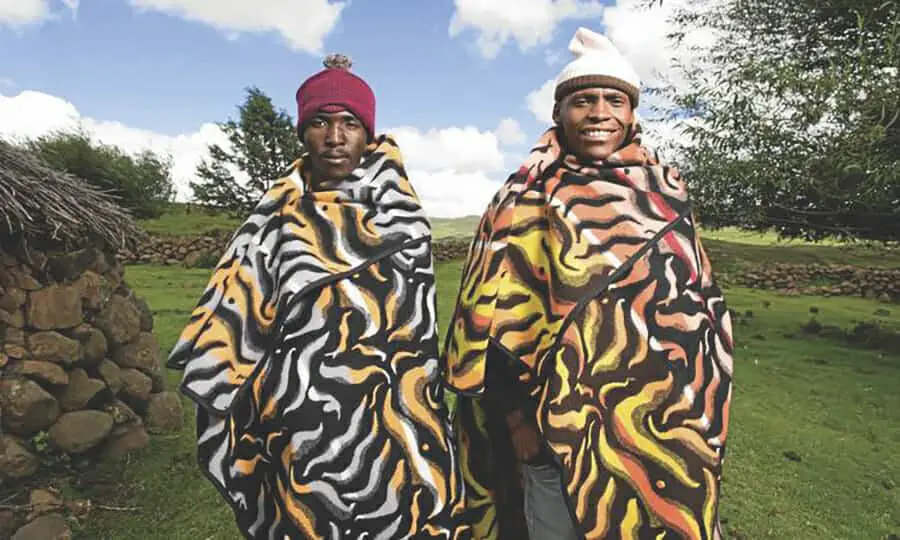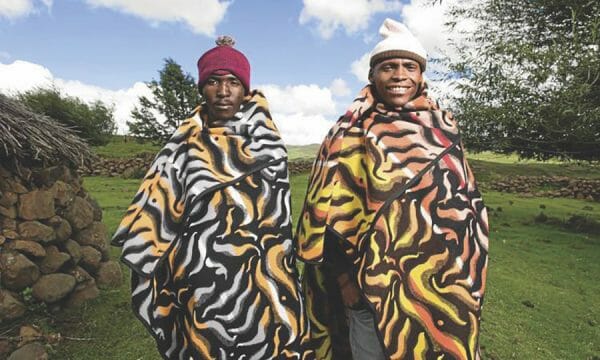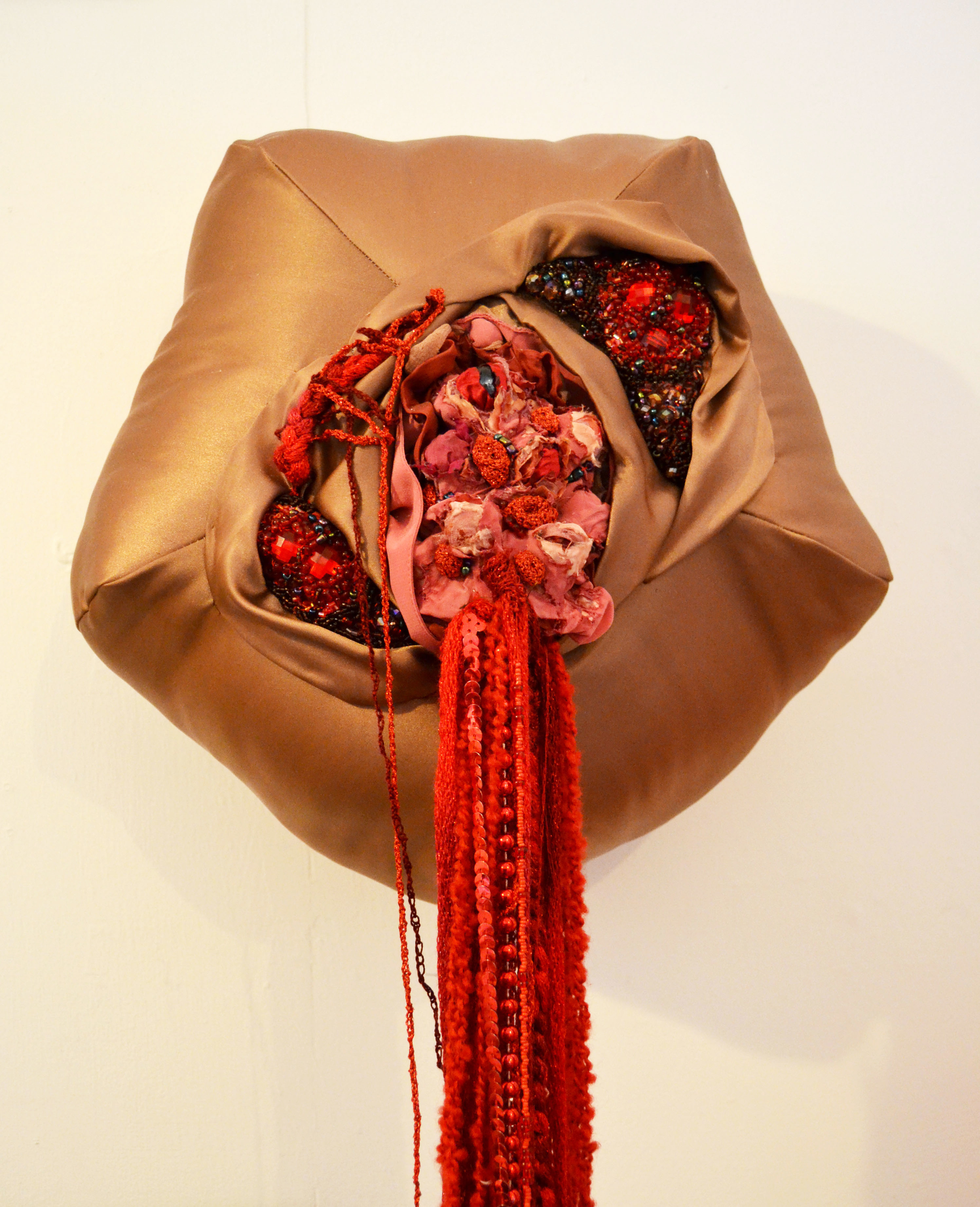In the tiny Southern African country of Lesotho, there is a strong textile tradition that manifests in the Basotho Blanket. This flamboyant yet functional garment is iconic and in this post, I’ll explain why it is used and what it means.
Basotho blankets are warm, colourful woollen blankets worn by the people of the mountainous country of Lesotho. The vibrant designs of these blankets, also called Seana Merana, represent fertility, fortune and family.

Border Tribe
In the Black Panther movie, a tribe of warriors disguised as farmers protect the borders of the fictional country Wakanda. They live in a rural mountainous landscape and are accomplished riders. The Border Tribe is lead by W’Kabi (Daniel Kaluuya) who is the head of security of Wakanda and the Black Panther, T’Challa’s, best friend. The Border Tribe wear blankets inspired by the traditional Basotho blankets around their shoulders as part of their tribal dress and uniform, and as protection against the cold mountain climate. Their blankets and their rural lifestyle are inspired by the people of Lesotho.
Why Do Basotho Wear Blankets?
Lesotho is a landlocked country surrounded by South Africa and is the highest country in the world with an average altitude of 2100 meters above sea level. Lesotho experiences harsh cold winters with snow and the famous Basotho blanket is used as protection against this unforgiving climate.
Lesotho is also one of the few countries in the world that has a homogeneous population with 99% of the people belonging to the Basotho ethnic group and speaking a single language called Sesotho. Three quarters of the population live in rural conditions. The country became independent from Britain in 1966 and is a constitutional monarchy ruled by King Letsi III.
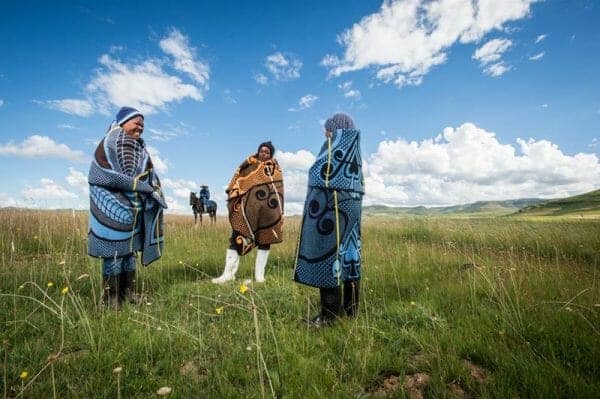
What Is The History Of The Basotho Blanket?
It is generally accepted that the traditional Basotho blanket is a local invention, but its historical origins can be traced back to European traders and more specifically to a single incident that happened in 1860.
Mr Howel, a trader, presented a woollen blanket to King Moshoeshoe I as a gift, and the king was so taken with this gift that he began wearing it in preference to his traditional leopard skin karosses.
The distinctive 1 cm wide stripes known as pinstripes came about as a weavers’ fault. Instead of correcting the fault the manufacturer decided to ship these faulty blankets to Lesotho and it has since become a traditional feature of the Basotho blanket. The blankets are made of 88% wool and 12% cotton and is quite rough and firm.
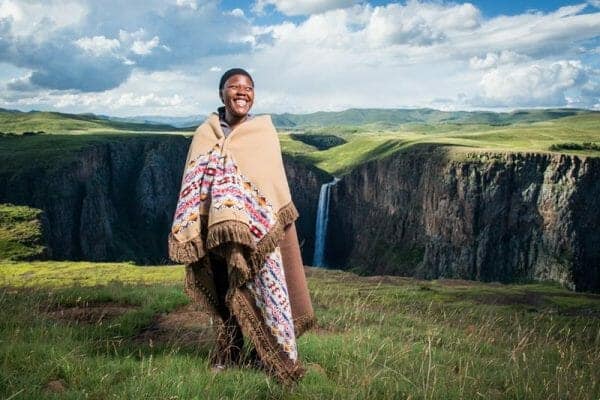
What is the symbolism of Basotho Blankets?
Basotho blankets come in a range of symbolic patterns, with each design intended for a different event, ceremony or stage of life:
- Basts – fertility and wealth
- Moholobela – transition to manhood
- Motlotlehi – wedding preparation
- Serope – new childhood
The most famous of these is the Basts characterised by their distinctive corn cob design symbolising fertility and wealth. The design dates back to the 1930’s when it was created by a Mr Charles Hendry Robertson who owned a trading store in Leribe called Seanamarena meaning “to swear by the Chiefs.”
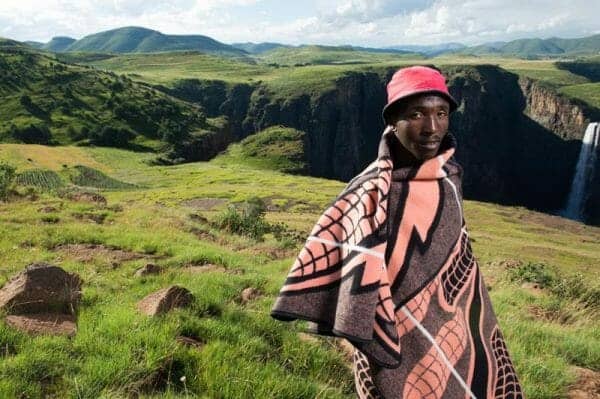
The Moholobela is a fertility blanket worn by young Sotho men in preparation of their transition to manhood. After the initiation ceremony, the young men in Lesotho will don a different blanket known as the Lekhokolo, which confirms that they have reached adulthood.
In preparation for the wedding ceremony, Lesotho women ordinarily wear a Motlotlehi blanket on their wedding day, and husbands will traditionally gift their wife a Serope blanket when their first child is born.
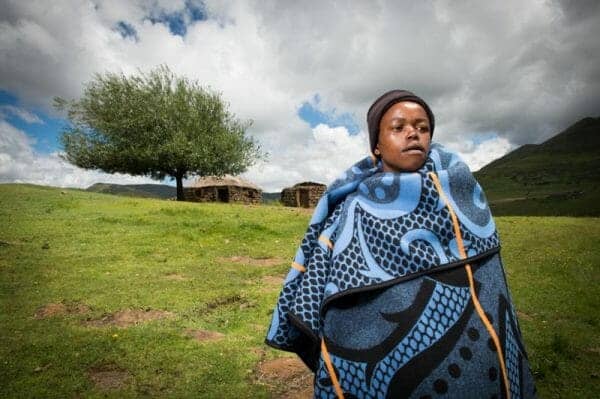
Are Basotho Blankets Still Used Today?
The Basotho blanket is still used extensively and are exclusively produced by Aranda Textile Mills in Randfontein, South Africa with the blessing of the Lesotho royal family. New designs are subject to approval from the Royal Family, ensuring that they maintain a strong identity and close connection to their roots.
Their combination of functional warmth and colourful character mean that they remain a popular choice for the Lesotho people. The pride in cultural identity is combined by their usefulness to maintain their ubiquity, and they are gaining international recognition for their vibrant design.
Images courtesy of Marvel Pictures, DiasporicBlues on Twitter and Aranda Textile Mill.
This post is part of a series exploring the tribes referenced in the Black Panther film. Costume design plays a huge role in making this movie such a success, and Costume designer Ruth E. Carter and movie director Ryan Coogler went to great lengths to ensure that the tribal references in the movie are as authentic as possible.
You can enjoy the second post, about Zulu Headdresses here.

